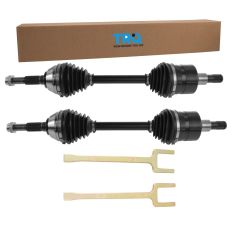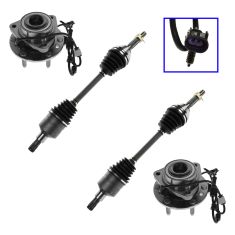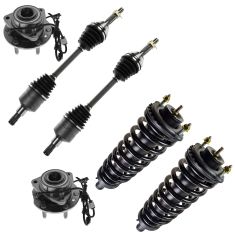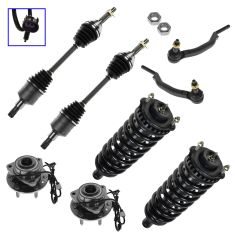1AACS00087-Front Driver & Passenger Side 2 Piece CV Axle Assembly Set TRQ CSA82476
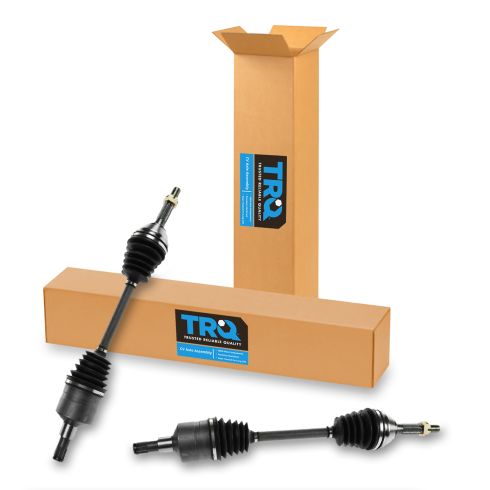
Replaces
2004 Chevrolet Trailblazer Front Driver & Passenger Side 2 Piece CV Axle Assembly Set TRQ CSA82476

Product Reviews
Loading reviews
4.82/ 5.0
17
17 reviews
Fit perfect and great price.
June 30, 2017
Everything for as it should. Fast shipping, great price. Can't get any better.
Very nice
September 15, 2018
Very nice quality and new not rebuilt, shipped was right on time , very good price thanks.
CV Axle Shaft Pair
October 17, 2018
Good quality and exact fit would recommend will by from them again
Perfect Part
February 6, 2019
After viewing your video on replacing the CV axles I decided to purchase the axles from you and try it myself. I was impressed with the ease of fit and overall quality of the parts.
Delivery was on time and the product was just what I ordered and needed.
Just like OEM
May 15, 2019
Fits and works great.
November 5, 2019
The CV Axles were spot on and appeared to be better quality than our local auto parts businesses
The Tie Rods, however, were the wrong thread size. But when requested for return it was handled quickly and appropriately.
I then purchased the Ball joint set, upper and lower, and they arrived in decent time and were the right parts.
Thanks to a friend suggesting getting parts from you, I will be looking forward to getting other parts from you for my other vehicle.
Great products
June 28, 2020
Fast shipping and excellent prices!
All my parts I order
July 1, 2020
Always happy that I get my parts the next day. I always tell people to order from you, when I call I get great customer service.Overall very happy.
Awesome
September 5, 2020
The parts were an exact fit for my wifes 2002 bravada. I popped the old ones out and the snapped right in place. The only thing Id say is needed is a torque spec sent with the new part. Other than that great product.
GREAT PURCHASE
October 25, 2020
I couldnt be happier with my purchase. It was exactly what I was looking for. It came well packaged, undamaged and in a timely manner. Thank you 1AAUTO. I look forward to more business with you.
June 27, 2021
Excelente service and great parts !!!
Great
July 13, 2021
Quick delivery and correct oem parts for an easy swap out. Thanks
December 29, 2021
Very good
January 2, 2022
fit perfect
Parts
April 19, 2023
Works well as advertised. Thank you
July 17, 2023
Great replacement
March 3, 2024
works well
Customer Q&A
Do these come with the nuts?
February 19, 2017
10
Yes
February 19, 2017
Patrick A
10
Yes, both shafts come with a new locking nut. Just be aware that the new nut is a 36mm vice the stock 35mm so be sure you have the appropriate deep socket impact size ready when reinstalling.
February 20, 2017
Arnie J
10
Yes, The pair I ordered came with new nuts. If the old ones are in good shape, hold on to those to make sure it all works correctly
February 22, 2017
Thomas F
What size diameter are the CV boots?
February 4, 2021
10
Actual Measurements are not listed or available. Our parts are exact replacements for your vehicle's OEM parts. As long as your year, make, and model match up with our listing, these parts will directly fit and function like the originals.
February 4, 2021
Adam G
Does this cv axle fit the SS 6.0 awd models?
February 21, 2021
10
Yes, according to the information you provided, this part will fit your vehicle.
February 23, 2021
Corey M
Chevrolet is a registered trademark of General Motors Company. 1A Auto is not affiliated with or sponsored by Chevrolet or General Motors Company.
See all trademarks.








